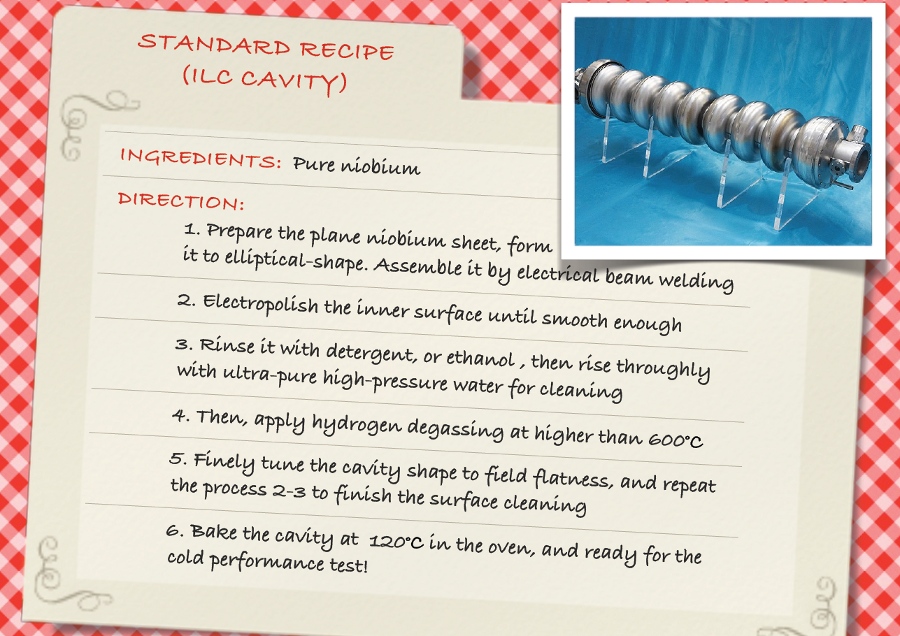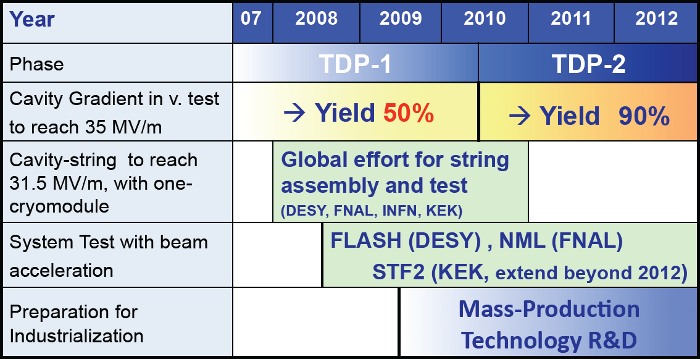Director's Corner
30 July 2009
Global effort for high-gradient ILC SCRF cavities
Today's issue features a Director's Corner from Akira Yamamoto, Project Manager for the Global Design Effort.
I would like to thank Barry Barish for his 9 July Director's Corner where he described the importance of and progress in the ILC superconducting cavity development, and also for the opportunity to write this column and expand on the efforts for an area of the Main Linac and Superconducting Radiofrequency (ML-SCRF) technology and the tasks ahead of us.
First, the leadership of the 'Cavity Group' changed this past April. This group is responsible for coordinating our R&D efforts on superconducting RF cavity gradient around the world. Lutz Lilje of DESY had held this position since August 2007 and, based on his long experience with cavity development at DESY, he provided us with strong leadership in the early period of the Technical Design Phase. We are grateful and sincerely thank Lutz for his efforts, and of course we wish him the best as he may be further responsible at DESY and the European X-Ray Laser Project (XFEL) to fruition. At the same time, we are very pleased to welcome Rongli Geng of Jefferson Lab into this leadership role. Rongli has been with Jefferson Lab for more than two years and has extensive technical background in the field hailing from Cornell University where he worked under the direction of Hasan Padamsee. We thank the Jefferson Lab management for supporting Rongli in this role as the cavity research and development group leader to improve the cavity field gradient for the ILC Global Design Effort (GDE) in the technical design phase as milestones shown in the figure.
 To make ILC cavities, follow the recipe. ©ILC To make ILC cavities, follow the recipe. ©ILC |
As Barry noted, our R&D efforts have succeeded in improving the general understanding of cavity limitations. We are approaching a cavity field gradient of 35 megavolts (MV) per metre with an yield of 50%, with qualified vender's fabrication followed by specified laboratory's surface processing listed as a 'recipe', as an interim goal of technical design phase 1 (TDP-I). Over the past years, this has included improvement and standardisation of our processing recipe with assessment and guidance given by the Tesla Technology Collaboration (TTC) as given in a TTC report, introduction of new diagnostic tools and better understanding of fabrication techniques. While these efforts will continue, we are also beginning to prepare for the technical design phase 2 (TDP-II), where the baseline cavity gradient may be re-optimised for a further practical goal for the ILC construction. We also need to begin preparing the associated industrialisation and economic plans as described later.
To do this, and as one of the first efforts under Rongli's technical leadership, we have formed a new task force to create a global database for ILC cavity test results. This task force team is led by Camille Ginsburg (Fermilab). In addition to Camille and Rongli, it includes Sebastian Aderhold (DESY), Zack Conway (Cornell), and Yasuchika Yamamoto (KEK). The charge to the task force team is to:
- collect and verify the global cavity R&D information;
- create and maintain a global database for the ILC-related cavity performance;
- analyse the database to understand the global progress in improving cavity performance;
- contribute to re-evaluation the status, and provide prospects for future cavity performance in TDP-II and the production phase.
It is critically important to understand our progress and yields on SCRF cavity field gradient limitations with a global perspective, and to develop models in the years to come that describe our technical and scientific outlook. The team has already started its work and is on track to provide an interim report to us at the Linear Collider Workshop of the Americas (ALCPG) and GDE meeting to be held in Albuquerque, New Mexico this fall. The progress to date of the task force will be reported at the upcoming International Linear Collider Steering Committee (ILCSC) meeting, as part of an ILC-GDE activity report.
As you may know, the ILC-GDE is in the process of the "Accelerator Design and Integration" study (read also), leading to a re-baseline document in the summer of 2010 to prepare for the updated technical guideline in TDP-II. The expected production cavity gradient and yield will be a set of the most important parameters in the ML-SCRF technical area to be provided in that evaluation process, as well as to look at the overall construction cost and plans in relationship with the Conventional Facilities & Siting Group and Accelerator System areas. Thanks very much to the team members for their efforts to create the global database system that we can use to provide this input in a clear and well-documented manner.
While we look at important details like cavity gradient, we should also start to plan in earnest the that will be required to scale up our production to the quantities necessary for realisation of the ILC. In this light, we would like to organise a discussion on ILC cavity industrialisation in a satellite meeting linked to the 1st International Particle Accelerator Conference held in Kyoto, Japan in May 2010. To prepare for this meeting, we may organise an informal meeting and discussion, taking an occasion of the SRF conference to be held in Berlin, in September of this year. These meetings will soon be announced to the ILC community and we welcome both industrial and institutional participation.
-- Akira Yamamoto

